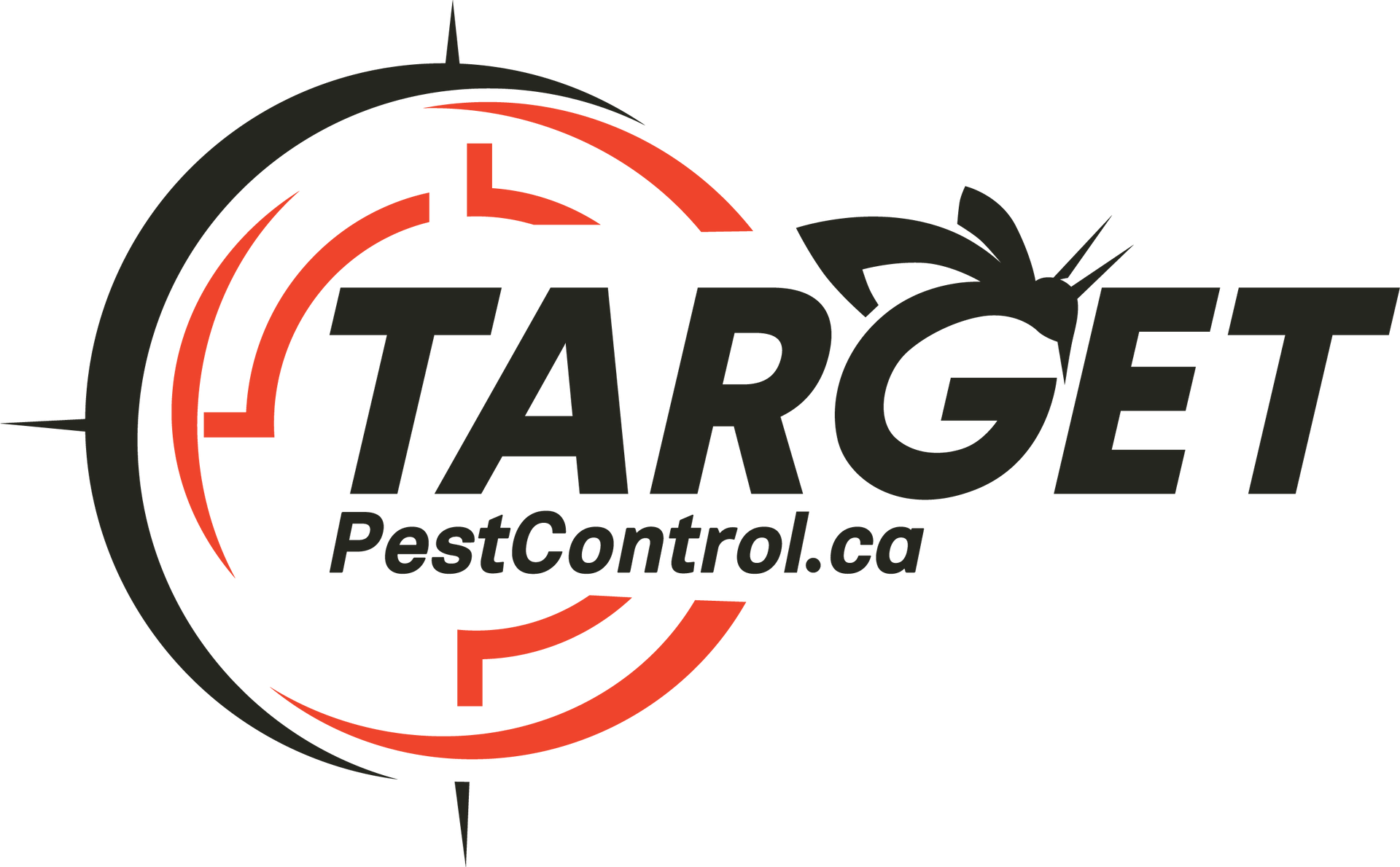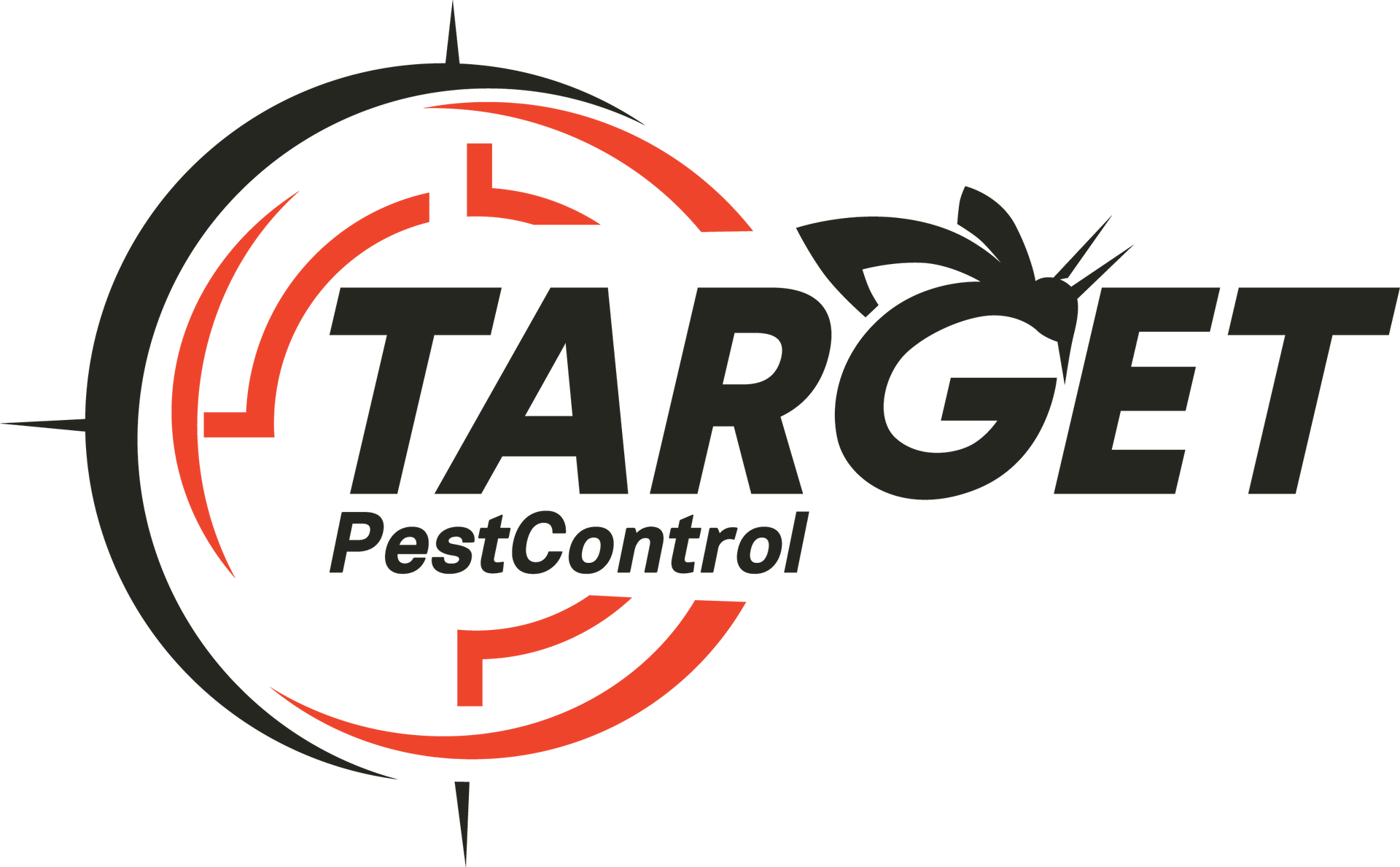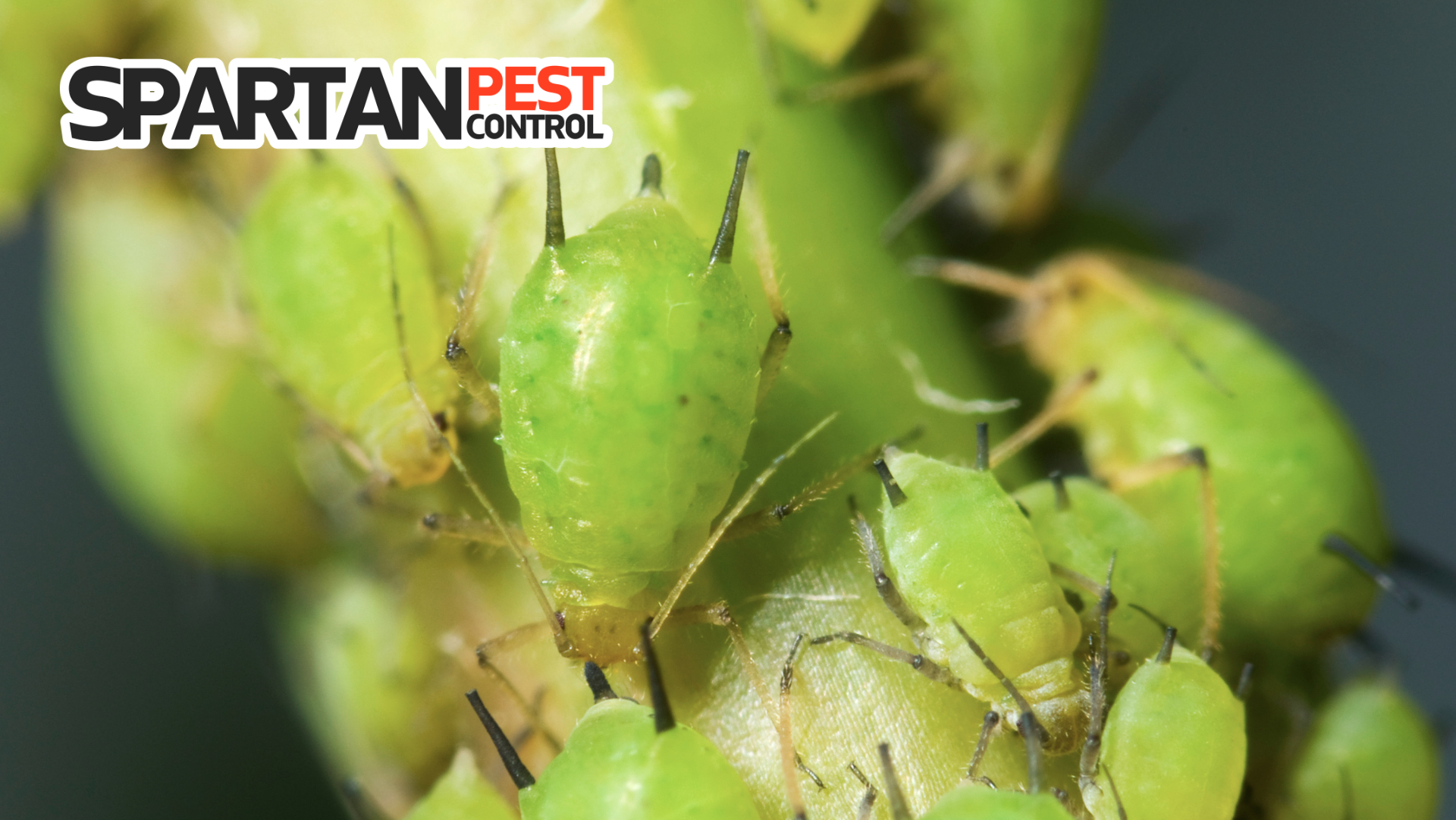My name is John Target, owner and operator of Target Pest Control. We are located in Calgary, Alberta and I have over 18 years of experience in the industry.
Get In Touch!
Phone Number:
Email Us:
Phone Number:
Send An Email:
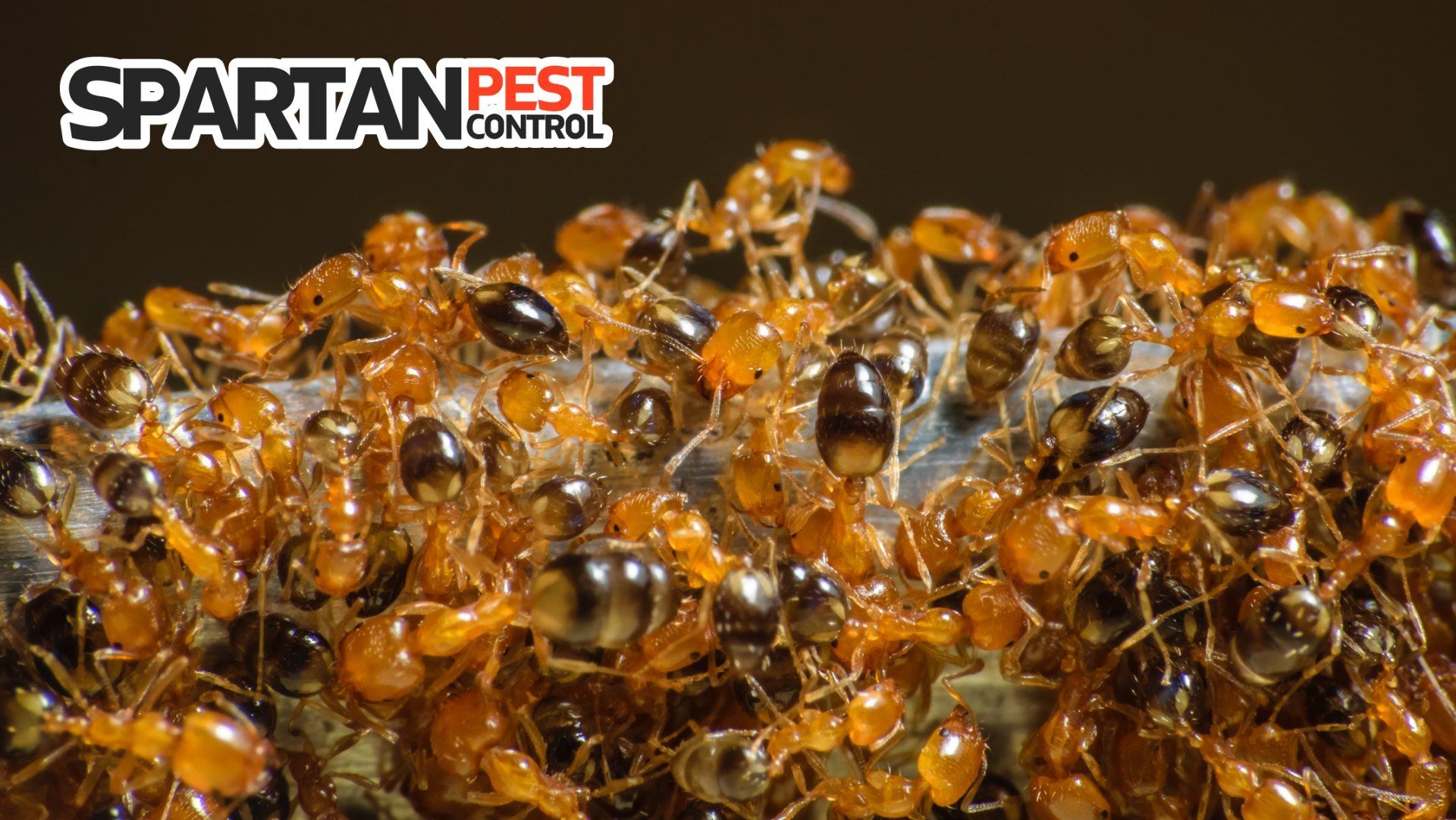
What are Pharaoh Ants?
Pharaoh ants (Monomorium pharaonic) are a major pest species in North America. They are extremely difficult to eliminate and often reside in restaurants and hospitals. Their name comes from the mistaken belief that they were one of the plague’s unleashed on Pharaoh’s Egypt. They have a unique colony structure; each colony has many active queens. This allows them to form smaller bud colonies quickly. A bud colony occurs when a queen, some workers, and some males leave the old nest to form a new one. This new nest will work cooperatively with the old nest.
What Do Pharaoh Ants Look Like?
Pharaoh ants are a small ant of varying colors. Workers, who are seem most often, are yellow to light brown. Occasionally, they are reddish brown. They are generally smaller than the queens, about 2 mm. Males are black, around 3 mm and winged. Females are dark red and about 3.6 to 5 mm. They have wings initially but lose them after mating. All Pharaoh ants have a darker abdomen. They have three main body segments and two small circles called nodes. The first segment, their head, contains two small eyes; they have poor eyesight. Their head also has two clubbed antennae and strong mandibles. Their antenna have twelve segments plus three larger segments at the end. The second portion of their body, the thorax, contains six legs. Each leg has a small claw at the end. The first set of legs is often used to groom the face. Pharaoh ants have an uneven thorax, giving them a small, crooked waist. The final segment is the abdomen. It is separated from the thorax by two small circles called nodes. Their abdomen contains their vital organs along with a stinger. Despite this stinger, they do not sting.
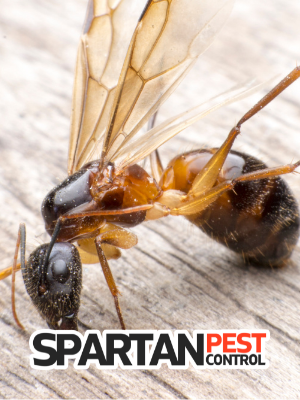
Where Do Pharaoh Ants Live?
Pharaoh ants country of origin is unknown although they are a tropical species. They are found in Europe, the Americas, Australia, and Asia. They thrive in warm, humid conditions although they have adapted to temperate conditions by living indoors in Canada. They are often found in restaurants and are a dangerous pest in hospitals. Their nests are frequently in hidden areas such as in walls, behind cabinets, baseboards, under fridges, and in storage areas. Outdoors, they nest in shady areas under leaves or organic debris. In Alberta, they can only survive indoors.
What Do Pharaoh Ants Eat?
Like many ants, Pharaoh ants are not picky eaters. They eat a wide variety of foods including sweets and insects. Outdoors, they will eat other insects, berries, and grasses. But they are more attracted to man-made sweets such as pop, peanut butter, honey, and baked goods. They also eat grease stains and pet food.
How Fast Do Pharaoh Ants Reproduce?
Pharaoh ants are unique; they have many egg producing queens in one nest. Each queen lives between 4 and 12 months. The large number of queens allows them to grow exponentially and continually make smaller bud colonies when threatened. Queens will often mate with males from other nests to increase diversity. Once mating has occurred, the males will die, and the females will return to the nest. The queen will lay 10 to 12 eggs early in life; later, she will lay 4 to 7 eggs. Pharaoh ants need hot temperatures and high humidity to hatch their eggs. They need at least 27°C and around 80% humidity. The eggs hatch into larvae after a five to seven days. As larvae, they are small, white, and grub-like. They will be fed by workers for 18 to 19 days. Then, they pupate or form a cocoon. Inside the cocoon, they will begin to transform into an adult ant. This process takes about 9 days. The total lifecycle takes between 38 and 45 days. Pharaoh ants can produce eggs throughout the year. Their colonies grow by budding. A small group of queens, workers, and eggs will find a new nest location. Unlike other ant species, this new nest will work cooperatively with the parent nest.
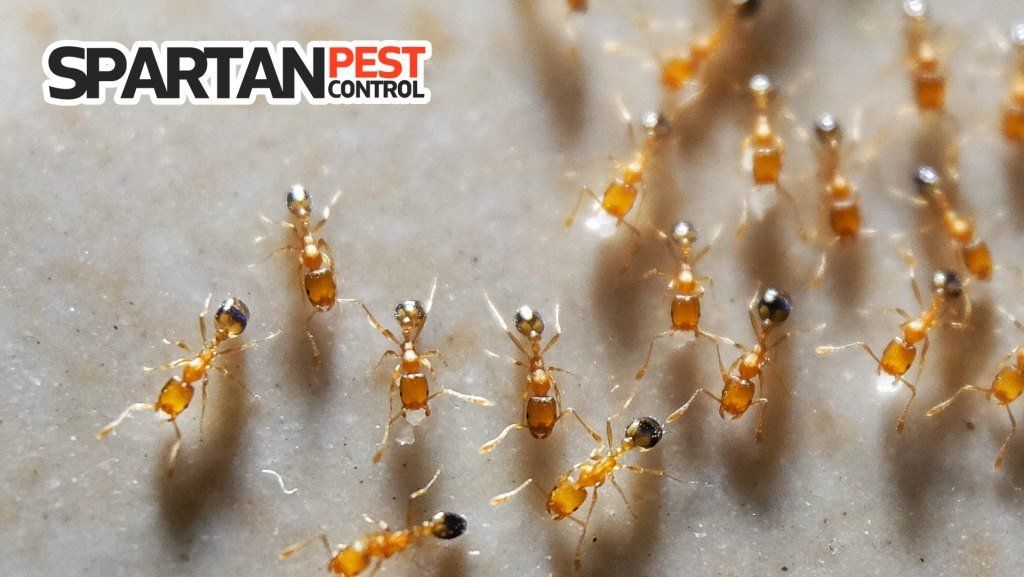
What are the Signs of a Pharaoh Ant Infestation?
Pharaoh ants leave few signs. Their nests are usually hidden in unseen locations such as behind walls. Often, the only sign of an infestation is seeing ants. They will frequently leave the nest to forage for food. They are often seen in kitchens and generally take the same pathways to and from their nest. These paths are marked by pheromones to signal where food is. These ants will often travel along windows, baseboards, and piping.
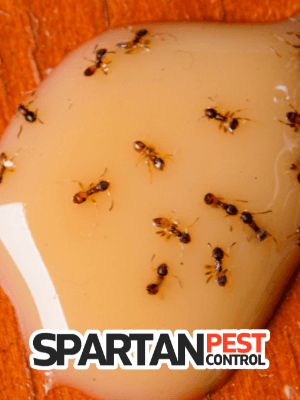
What Causes a Pharaoh Ant Infestation?
A Pharaoh ant infestation is often caused by unsanitary or untidy conditions. Ants gravitate towards areas where there is plentiful food, warmth, moisture, and shelter. Crumbs, spills, and unsealed food containers will attract them. They are particularly attracted to sugary food; however, they will not always infest a food source. They may infest an area that is more sheltered but near food. Their indoor diet is primarily made up of grease and sweets. They will also gravitate towards areas with the high humidity necessary for their eggs. This is often basements, bathrooms, or areas with leaking pipes.
Pharaoh ant infestation are also caused by access to the home. They can come indoors through torn window or door screens, on animals, and through cracks in the foundation. In Alberta, they likely come from infested items such as food or furniture.
What Problems Do Pharaoh Ants Cause?
Pharaoh ants have multiple fertile queens; this causes an infestation to grow rapidly. A small infestation will quickly become a large one. Pharaoh ants do not bite or sting, but they are small and can easily get into food packaging and spread disease or bacteria. In hospitals, they can enter IV bags and cause major problems. The two most common diseases Pharaoh ants cause are salmonellosis and dysentery.
Salmonellosis is caused by the salmonella bacteria. This bacterium is spread as ants crawl over tables, counters, and food, contaminating it with bacteria. Symptoms of salmonellosis include a fever, chills, vomiting, diarrhea, cramps, and a headache. They generally last four to seven days. Those with healthy immune systems usually recover without medical intervention. However, children, the elderly, and the immunocompromised may need iv fluids.
Dysentery is an intestinal infection. It can be caused by a few different kinds of parasites and bacteria. It takes up to three days to appear after infection and primarily causes bloody diarrhea. Other symptoms include a fever, nausea, and vomiting. Sometimes, it can be treated by OTC medications and hydration. In more serious cases, I.V. fluids or antibiotics are needed. It is most dangerous to the elderly, young, and immunocompromised. In some cases, it can cause serious complications such as seizures.
How Do you Treat a Pharaoh Ant Infestation?
Treating a Pharaoh ant infestation is difficult. When they encounter pesticides, they often split into multiple smaller colonies or nests (called budding). This scattering makes them extremely challenging to treat with insecticides. The best treatment to eliminate Pharaoh ants is commercial grade ant bait. It needs to be placed strategically to avoid budding and often takes time to work, in some cases weeks depending on the size of infestation and location of nest. Slow acting baits are best because it does not stress the ant or nest. Make sure to remove other food sources before placing bait. Health Alberta recommends hiring a professional exterminator for Pharaoh ant infestations. For more information on controlling Pharaoh ants, check out our ant control services page for details.
How Do you Prevent a Pharaoh Ant Infestation?
Preventing a Pharaoh ant infestation is mainly a matter of keeping a tidy home and doing regular home maintenance. Clean up any spills or crumbs quickly. Frequently sweep and mop floors and don’t leave dirty dishes around. Keep any food in sealed containers, especially pet food. In general, clean often. Seal all potential entries into your home such as window and door screens. Make sure to also reduce humidity. Pharaoh ants need around 80% humidity for their eggs to hatch. Reduce humidity with a dehumidifier and fix any leaking pipes. To prevent ants from coming into your home, look over any new items or plants that come into the house.
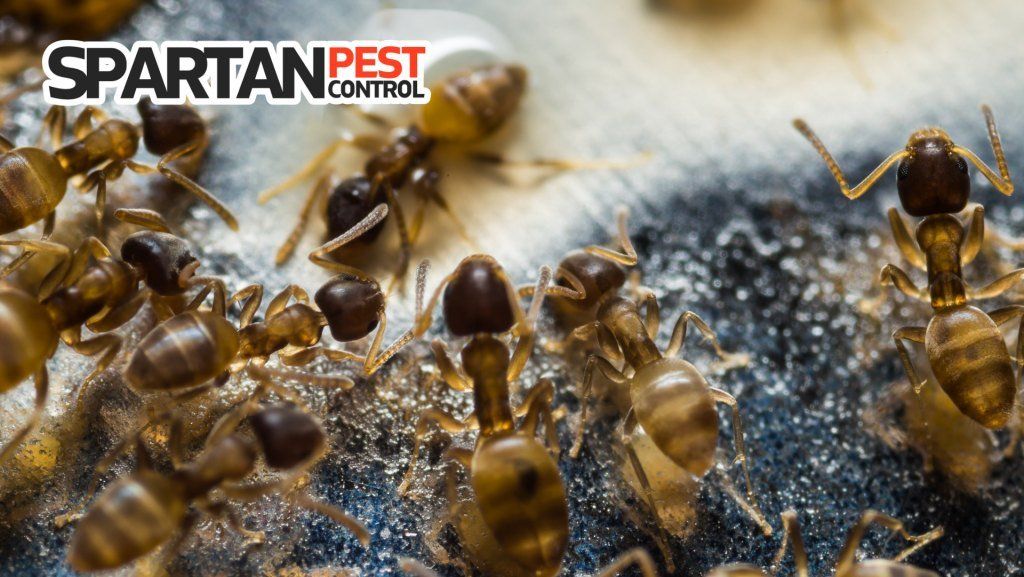
Pharaoh Ant Facts
1. Pharaoh ants are polygynous
Each colony has multiple active queens. Having many queens helps them reproduce quickly and survive pesticide use.
2. Pharaoh ants rely on pheromones
They use three kinds for different purposes. They use them to mark their trails, attract a mate, and to mark food sources.
3. Pharaoh ants are hygienic
While they are not hygienic to humans, ants clean themselves often. They will clean their bodies when entering and exiting the nest.
4. Pharaoh Ants are heavy lifters
They can carry around 3x their body weight. An untrained human can deadlift their body weight but cannot carry it any distance. Ants can carry that weight over long distances.
5. Pharaoh ants lack lungs
Instead of human-like lungs, they breathe through tiny holes in the sides of their bodies. They breathe easier when they are moving.
6. Pharaoh ants are named after Egypt
They were mistakenly believed to be one of the biblical plagues in ancient Egypt. This is where they get the name “Pharaoh” from.
About Author
John Target - Owner & Operator
My name is John, owner of Target Pest Control. We are now located in Calgary, Alberta and have been providing pest control solutions on the east coast since 2008. I have over 18 years experience in the industry and enjoy the everyday problem solving this industry offers.
You May Also Like

AUTHOR

RECENT POSTS

© Copyright 2024 | All Rights Reserved | Web Design & SEO by Purple Penguin Media
